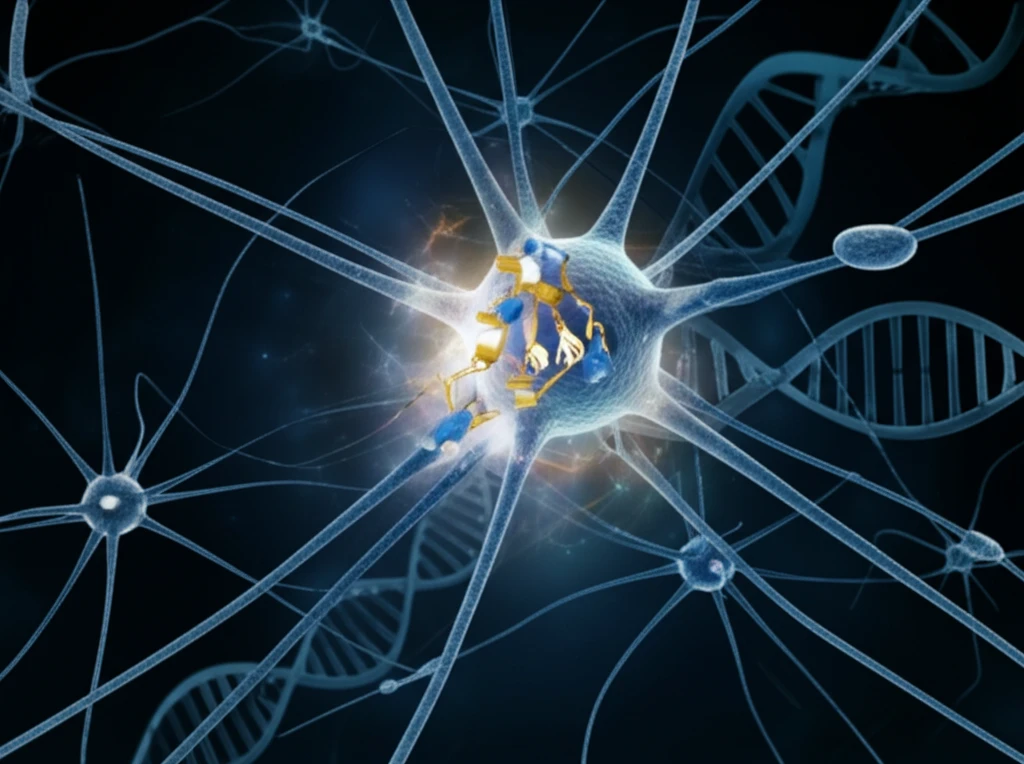
Batten Disease: Unlocking the Calcium Connection for Future Therapies
"Could Calmodulin hold the key to understanding and treating Neuronal Ceroid Lipofuscinoses (NCLs)?"
Batten disease, also known as neuronal ceroid lipofuscinosis (NCL), is a devastating neurodegenerative disorder affecting individuals of all ages. It leads to vision loss, seizures, motor function decline, cognitive impairment, and a shortened lifespan. Currently, Brineura is the only clinically approved therapeutic, but it targets only one specific subtype of the disease (CLN2 disease) due to a limited understanding of NCL proteins and their functions.
Scientists have identified 13 distinct genes (CLN1–8, CLN10–14) associated with NCL, encoding various proteins with different cellular roles, including enzymes, transmembrane proteins, and cytoplasmic components. They're linked to fundamental cellular processes like sphingolipid metabolism, protein degradation, and lysosomal pH homeostasis. Mutations in these NCL proteins result in similar clinical phenotypes, suggesting their involvement in shared biological pathways.
A recent study has revealed a potential link between calcium signaling and NCL proteins, with Calmodulin (CaM) emerging as a central player. CaM regulates various cellular processes affected in NCLs, making it a promising therapeutic target.
Calmodulin (CaM): The Overlooked Link in NCL Protein Function?

Eukaryotic cells use calcium to regulate cellular processes, including nerve cell transmission, motility, exocytosis, apoptosis, and transcription. CaM, the primary calcium sensor in the cell, undergoes conformational changes in the presence of calcium, enabling it to bind and regulate CaM-binding proteins (CaMBPs). Proteomic screens have identified numerous calcium-dependent CaMBPs in the mammalian brain with various functions, including neuronal nitric oxide synthase, calcineurin A, calcium/CaM-dependent protein kinase II (CaMKII), calcium/CaM-dependent protein kinase kinase, and calcium channel proteins.
- Purkinje cell protein 4 (PCP4), which modulates CaMKII activity, is downregulated in a CLN1 disease mouse model.
- CaMKII expression increases in a CLN5 disease mouse model.
- CaM-dependent protein kinase type 1D decreases in brain samples from CLN4 disease patients.
- CaMKII and other CaMBPs are central to Alzheimer's disease progression, with recent work linking Alzheimer's to CLN5 mutations.
The Future of NCL Therapies: Targeting Calmodulin?
The discovery that patient mutations overlap with putative CaMBDs in NCL proteins suggests that CaM may significantly contribute to NCL pathology. The two NCL proteins that lack putative CaMBDs, CLN7 and CLN11, are processed by CTSL, which contains a putative CaMBD, suggesting these NCL proteins are indirectly regulated by CaM through its interaction with CTSL.
Targeting CaM and its CaMBPs has shown promise in Huntington's disease treatment, where disrupting the binding of CaM to mutant huntingtin using a synthetic peptide led to neuroprotection. A similar approach targeting CaM in NCL models could yield similar results, suggesting CaM and/or CaM-regulated signaling may serve as a therapeutic target for NCLs.
Future research should focus on examining and validating CaM binding to NCL proteins, assessing the effects of NCL protein mutations on CaM binding, and exploring how CaM regulates NCL protein function. Understanding this relationship could explain how NCL proteins interact and pave the way for novel therapies to treat this devastating disease.
